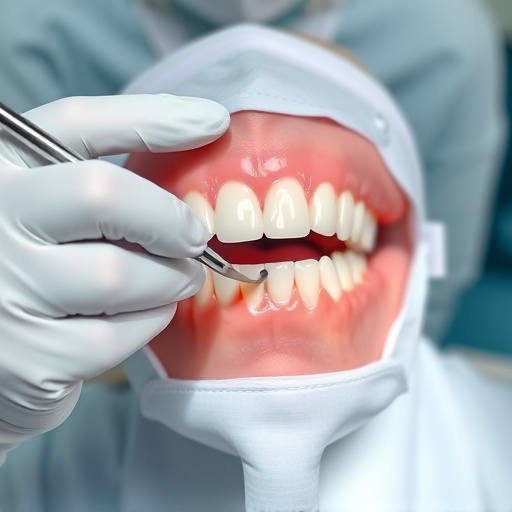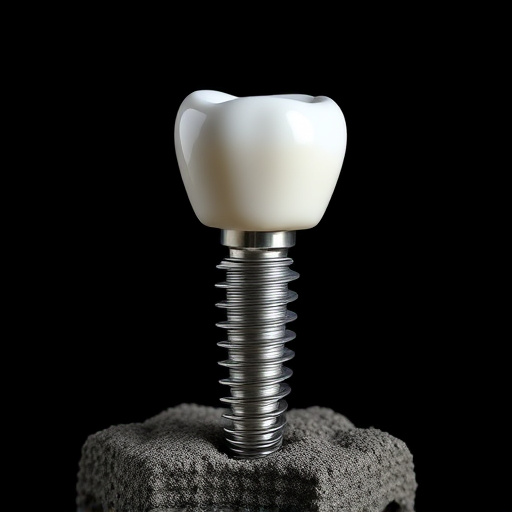Before wisdom teeth removal, dentists assess X-rays and medical history to determine overcrowding, misalignment, or inflammation. During the procedure, anesthesia manages pain, and dental bonding may be used for fit during recovery. Surgical extraction involves incising gums, removing the impacted tooth in fragments, cleaning the site, and potentially placing a dental crown. Post-op care includes managing pain, swelling, diet, hygiene, and discussing long-term solutions like dental implants.
Considering wisdom teeth removal? This comprehensive guide breaks down the process, from initial assessments using X-rays and reviewing your medical history to choosing anesthesia options for pain management. The surgical extraction process is detailed step by step, along with essential post-op care instructions. Learn what to expect during and after the procedure to ensure a smooth recovery.
- Assessing Your Wisdom Teeth X-Rays and Medical History
- Anesthesia and Sedation Options for Pain Management
- Surgical Extraction: Step-by-Step Process and Post-Op Care
Assessing Your Wisdom Teeth X-Rays and Medical History

Before any wisdom teeth removal procedure begins, your dentist will thoroughly assess your dental X-rays and medical history. This step is crucial in determining whether your wisdom teeth are impacted or causing issues that require extraction. During this process, your dentist will look for signs of overcrowding, misalignment, or inflammation around the wisdom teeth. They’ll also consider your overall health, including any pre-existing conditions or medications that might affect the procedure and recovery.
A comprehensive dental care assessment includes reviewing your routine oral exams and X-rays taken over time to understand the development and position of your wisdom teeth. This helps in making an informed decision about whether extraction is necessary, thereby ensuring you receive appropriate general dentistry care tailored to your needs.
Anesthesia and Sedation Options for Pain Management

During wisdom teeth removal procedures, managing pain is a top priority for both patients and dentists. Anesthesia plays a crucial role in ensuring comfort throughout the process. Local anesthesia is commonly used to numb the specific area where the wisdom teeth are located, minimizing discomfort during extraction. This method allows patients to remain awake and aware but feels no pain in that particular zone.
For more complex cases or those with heightened anxiety, sedation options can be employed. Dental bonding, often used for tooth repair, might also be utilized to create a custom fit for an individual’s mouth structure, enhancing overall comfort during the recovery period. Preventive dentistry techniques, while not directly related to removal, are essential in understanding potential risks and maintaining oral health before and after the procedure.
Surgical Extraction: Step-by-Step Process and Post-Op Care

Surgical Extraction: Step-by-Step Process and Post-Op Care
During surgical wisdom teeth removal, a dental surgeon makes an incision in the gums to access the impacted tooth. They carefully remove the tooth, piece by piece, ensuring each fragment is extracted completely. In some cases, the tooth may be cut into smaller sections for easier removal without causing damage to the surrounding bone or tissue. Once the tooth is out, the surgical site is cleaned and stitched up. The dentist might place a dental crown over the gap left by the removed tooth to restore the bite and prevent bone loss.
After the procedure, proper post-operative care is crucial. Patients are typically given instructions on how to manage pain and swelling. They should stick to soft foods for a few days and avoid spicy or acidic foods that could irritate the surgical site. Regular dental cleanings and careful brushing around the area help maintain oral hygiene. For those considering long-term solutions, discussing options like dental implants can be part of the post-extraction plan to replace missing teeth effectively.
Wisdom teeth removal is a common procedure that can effectively alleviate potential issues caused by impacted or problematic third molars. By assessing X-rays, medical history, and considering anesthesia options, patients can navigate the surgical extraction process with confidence. Following the step-by-step guide and post-operative care instructions ensures a smoother recovery. This comprehensive approach to wisdom teeth removal allows individuals to maintain optimal oral health and avoid future complications.














